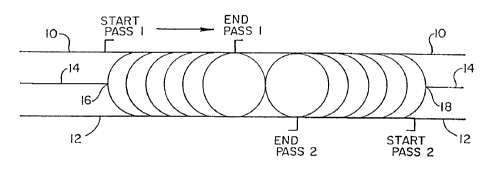Some of the information on this Web page has been provided by external sources. The Government of Canada is not responsible for the accuracy, reliability or currency of the information supplied by external sources. Users wishing to rely upon this information should consult directly with the source of the information. Content provided by external sources is not subject to official languages, privacy and accessibility requirements.
Any discrepancies in the text and image of the Claims and Abstract are due to differing posting times. Text of the Claims and Abstract are posted:
| (12) Patent: | (11) CA 2269558 |
|---|---|
| (54) English Title: | IMPROVED WELDING METHOD |
| (54) French Title: | PROCEDE DE SOUDAGE AMELIORE |
| Status: | Deemed expired |
| (51) International Patent Classification (IPC): |
|
|---|---|
| (72) Inventors : |
|
| (73) Owners : |
|
| (71) Applicants : |
|
| (74) Agent: | PIASETZKI NENNIGER KVAS LLP |
| (74) Associate agent: | |
| (45) Issued: | 2006-01-10 |
| (86) PCT Filing Date: | 1997-08-27 |
| (87) Open to Public Inspection: | 1998-04-30 |
| Examination requested: | 2002-06-04 |
| Availability of licence: | N/A |
| (25) Language of filing: | English |
| Patent Cooperation Treaty (PCT): | Yes |
|---|---|
| (86) PCT Filing Number: | PCT/US1997/015058 |
| (87) International Publication Number: | WO1998/017435 |
| (85) National Entry: | 1999-04-21 |
| (30) Application Priority Data: | ||||||
|---|---|---|---|---|---|---|
|
A welding method for improving the durability and strength of fusion weld
joints in metal structures; the method is especially
beneficial for metal structures fabricated from nickel-titanium alloy
(nitinol) and for medical devices.
L'invention a trait à un procédé de soudage permettant d'améliorer la durabilité et la résistance de joints de soudage par fusion dans des structures métalliques; le procédé est particulièrement avantageux pour des structures métalliques en alliage de nickel-titane (nitinol) et pour des dispositifs médicaux.
Note: Claims are shown in the official language in which they were submitted.
Note: Descriptions are shown in the official language in which they were submitted.

For a clearer understanding of the status of the application/patent presented on this page, the site Disclaimer , as well as the definitions for Patent , Administrative Status , Maintenance Fee and Payment History should be consulted.
| Title | Date |
|---|---|
| Forecasted Issue Date | 2006-01-10 |
| (86) PCT Filing Date | 1997-08-27 |
| (87) PCT Publication Date | 1998-04-30 |
| (85) National Entry | 1999-04-21 |
| Examination Requested | 2002-06-04 |
| (45) Issued | 2006-01-10 |
| Deemed Expired | 2011-08-29 |
There is no abandonment history.
Note: Records showing the ownership history in alphabetical order.
| Current Owners on Record |
|---|
| BOSTON SCIENTIFIC LIMITED |
| Past Owners on Record |
|---|
| SCIMED LIFE SYSTEMS, INC. |
| WALAK, STEVEN E. |